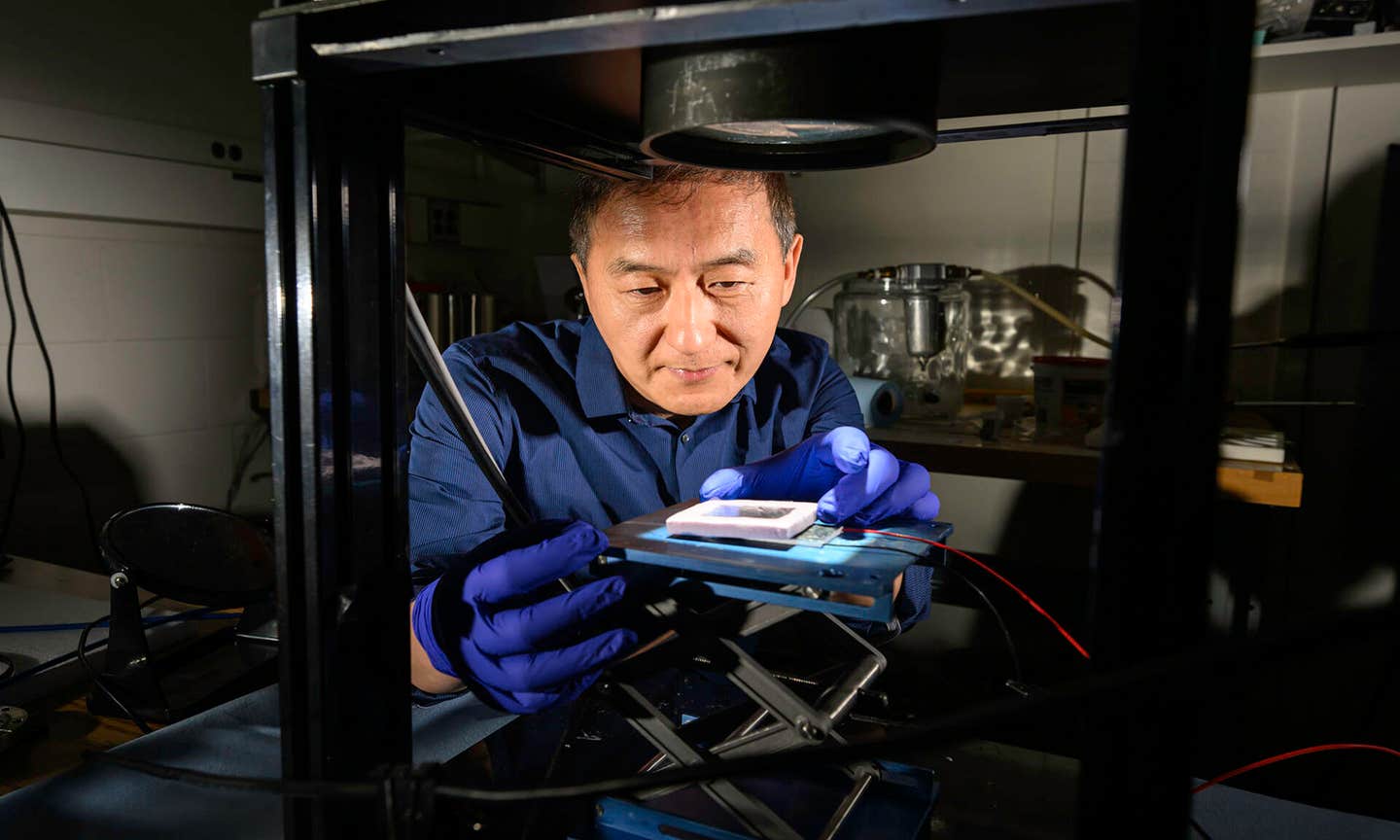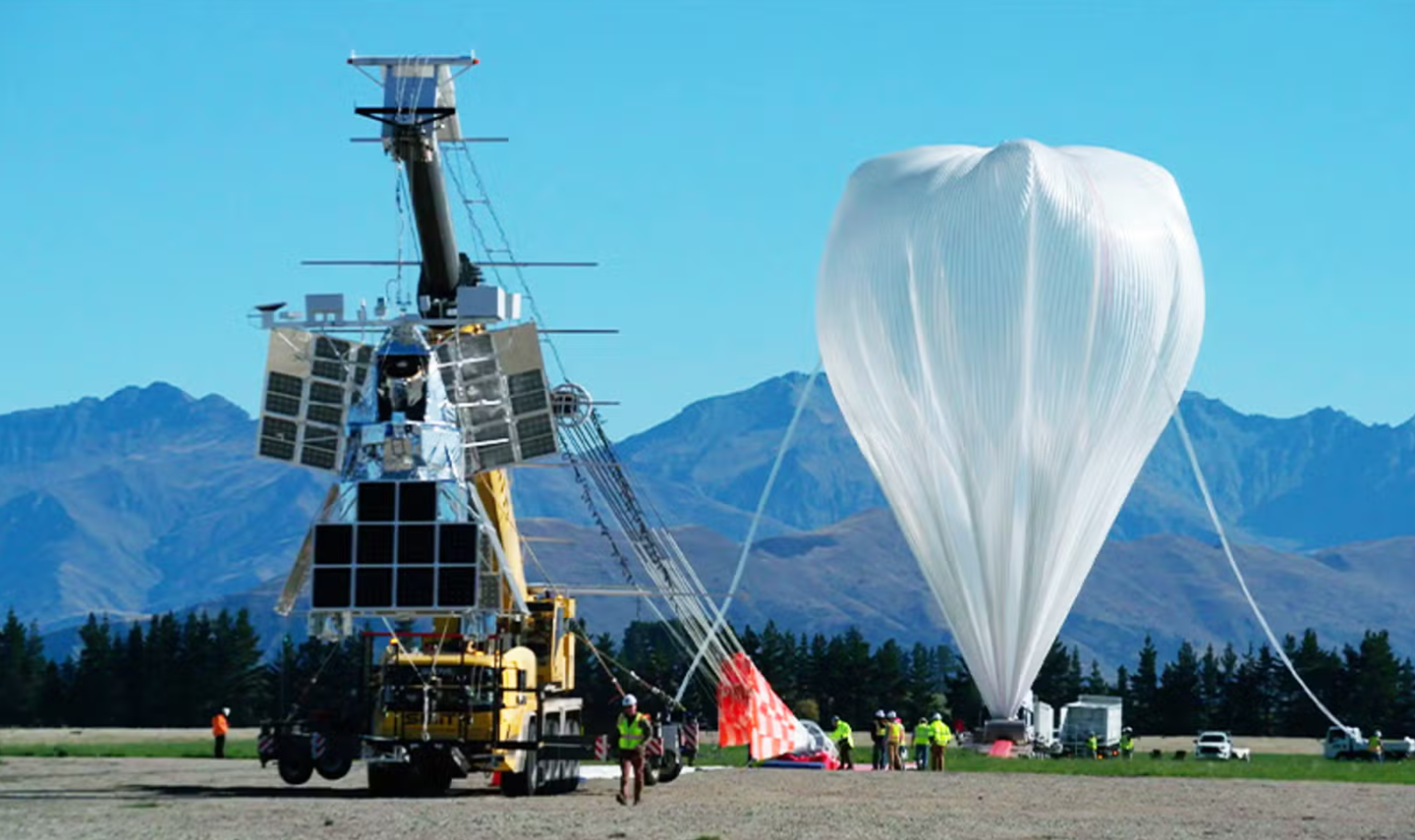Laser-etched ‘black metal’ boosts solar power generation by 15x
Scientists use lasers to boost solar thermoelectric generator power 15-fold, paving the way for new off-grid energy solutions.

Rochester researcher Chunlei Guo tests a solar thermoelectric generator (STEG) etched with femtosecond laser pulses to boost solar energy absorption and efficiency. (CREDIT: J. Adam Fenster / University of Rochester)
Solar panels may dominate rooftops today, but another form of solar technology—solar thermoelectric generators (STEGs)—is quietly catching up. These devices work differently from the photovoltaics in most panels. Instead of turning sunlight directly into electricity, they capture heat and turn temperature differences into power through a phenomenon called the Seebeck effect.
The idea is simple: one side gets hot, the other stays cool, and the heat flow between them generates electricity. The catch? Until now, most STEGs could only turn less than one percent of sunlight into usable electricity, far behind the 20 percent efficiency of typical home solar panels.
Researchers at the University of Rochester’s Institute of Optics have changed that picture dramatically. Their newly engineered device boosts power output by fifteen times compared to previous models, without even changing the core semiconductor materials.
Instead, the team, led by optics and physics professor Chunlei Guo, focused on rethinking the hot and cold sides of the generator. “For decades, the research community has been focusing on improving the semiconductor materials used in STEGs and has made modest gains in overall efficiency,” Guo explains. “In this study, we don’t even touch the semiconductor materials—instead, we focused on the hot and the cold sides of the device instead. By combining better solar energy absorption and heat trapping at the hot side with better heat dissipation at the cold side, we made an astonishing improvement in efficiency.”
Turning Metal Into a Solar Sponge
On the hot side of the device, the researchers used a laser-based technique to transform plain tungsten into a highly effective light absorber. By firing ultrafast femtosecond laser pulses, they etched nanoscale structures into the metal’s surface. This “black metal” absorbs more than 80 percent of sunlight while losing far less heat as infrared radiation. The result is a surface that soaks up solar energy like a sponge while holding onto the heat it collects.
Related Stories
- The future of solar power is clear—literally
- High-efficiency smart energy device stores solar power for use after dark
To keep that heat from escaping too quickly, the team built a tiny “greenhouse” over the black metal. Much like a farm greenhouse traps warm air, this transparent cover reduces heat loss from air movement and conduction, raising the temperature difference across the generator.
On the opposite side of the device, the team tackled the challenge of cooling. Using the same laser technique, they sculpted microscopic patterns into aluminum to create a powerful heat sink. These structures double the cooling performance of standard aluminum dissipators, radiating heat away efficiently while also improving airflow. By making the cold side cooler, the temperature gap between the two sides grows—exactly what’s needed to boost power production.
A Big Step Toward Practical Uses
In lab demonstrations, the upgraded STEGs could power LEDs far more effectively than traditional designs. Beyond lighting, Guo’s team sees potential in supplying energy to wireless sensors, wearable electronics, and small off-grid systems in rural areas. Since the technique works with a variety of metals and doesn’t require complex, expensive fabrication steps, it could be scaled up more easily than many past experimental designs.
Previous Research
Earlier research into STEGs often focused on improving the semiconductor materials sandwiched between the hot and cold sides, aiming to increase their “figure of merit,” or efficiency rating. While decades of work have raised this measure only modestly—hovering around a value of 1—scientists have explored ways to boost performance by widening the temperature gap instead.
Efforts included using multilayer solar absorbers, photonic crystals, or special coatings to trap heat, but many required costly, multi-step fabrication in vacuum chambers and struggled with durability at high temperatures.
Cooling methods have seen similar challenges. Traditional designs often relied on large metallic fins to dissipate heat, which added bulk and limited applications where space and weight were at a premium. Micro-scale fins created by micromachining improved airflow but did little for radiative cooling—especially in environments like space, where radiation is the main way to shed heat.
Practical Implications of the Research
This breakthrough could open the door for STEGs to become a more practical, versatile energy source. Their ability to work with both sunlight and other heat sources means they could complement solar panels or operate in places where photovoltaics aren’t ideal. Rural and off-grid areas could gain access to small, lightweight power systems without relying on fuel-based generators.
Wearable devices and remote sensors could run on ambient heat without frequent battery changes. And because the laser-based method is scalable, adaptable, and environmentally friendly, it has the potential to bring high-efficiency thermoelectric technology into mainstream manufacturing.
Research findings are available online in the journal Light Science & Applications.
Note: The article above provided above by The Brighter Side of News.
Like these kind of feel good stories? Get The Brighter Side of News' newsletter.



